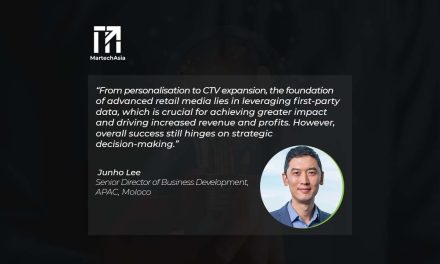
BEIJING, July 19, 2023 /PRNewswire/ — WiMi Hologram Cloud Inc. (NASDAQ: WIMI) (“WiMi” or the “Company”), a leading global Hologram Augmented Reality (“AR”) Technology provider, today announced that the generation of large amounts of data in real-time will become the norm for future society, and the gradual intelligence of devices makes them inherently capable of processing data instantly. Clouds can generate data locally and use it without involving cloud computing infrastructure. This improves data processing efficiency and feedback time. Based on this, an intelligent migration model is proposed which can support virtual functional chains at the IoT networks.
WiMi proposed LMM-VFC model. This model enables AI models to be executed on heterogeneous networks and incorporates a QoS (Quality of Service) monitoring model for real-time migration. The LMM-VFC model of WIMI is enhanced by the migration model.
The LMM-VFC model of WiMi is a novel distributed framework. The model is based on the Virtual Function Chains (VFC) concept and supports real-time inference for AI analysis. It is supported by a deep learning model of learning services that can monitor, evaluate and predict the quality of service (QoS) of the supported services. In this model, AI analytics is decomposed into a set of virtual functions (VFs) that can be deployed on different devices. Using these VFs, a VFC can be created, which distributes and processes streaming data. The VFO (Virtual Functions Orchestration) is responsible for deploying the VFC. The VFC deploys multiple modules through a framework that optimally designs the service, monitors its QoS metrics and fine-tunes its configuration to avoid failures. More specifically, the compute engine is responsible for proposing optimal settings for the VFC, while the learning service monitors the performance of devices and suggests possible changes. The LMM-VFC model thus builds intelligent models, optimizing linking capabilities and supporting the development of IoT technologies.
The LMM-VFC model supports machine learning. It is a model based on reinforcement learning and the best model for determining service migration. The migration problem is usually considered a sequential decision problem, which aims to minimize the overall response time. The computational migration scheme of the reinforcement learning model is the optimal strategy in the dynamics of just-in-time learning, which guarantees low computational latency.
And the model has a user classification mechanism based on user movement patterns to reduce the decision complexity. The model introduces a reinforcement learning framework to make service migration decisions in real-time in a dynamic environment. The effectiveness of the LMM-VFC model in reducing the average system latency is demonstrated through data-driven experiments. Because the IoT mobile cloud computing offload framework for lightweight process migration does not require application binaries on the server, it can seamlessly migrate native applications. The model framework shows great potential for resource-intensive IoT application processing in mobile cloud computing.
Cloud services can generate and use data locally without involving cloud computing infrastructure. To address the low computational resources of IoT nodes, WiMi’s model supports virtual function chaining to maximize the computational power to support services. It is an intelligent migration model that can support virtual functional chains. According to this model, migration can support each function of the virtual function chain. First, if a virtual function fails unexpectedly, it can be automatically repaired by cold migration. Second, the quality service monitoring model can trigger real-time migration, aiming to avoid the overloading of devices. The evaluation of the model shows its ability to improve services on low-power IoT devices.
The Internet of Things (IoT) is a rapidly growing field with a wide range of applications in industries such as healthcare, transportation and agriculture. As the number of IoT devices and their associated data continues to grow, there is an increasing need for efficient and intelligent models to manage and process this data. One of the key challenges for IoT is to support virtual functional chains.
WiMi’s LMM-VFC model involves moving processing tasks from a centralized server to a device closer to the data source, such as a router or gateway. Reducing bandwidth requirements and enabling real-time processing of data, the LMM-VFC model enables an intelligent model that supports VFC in the next generation of IoT. The model will use machine learning to optimize VFC migration decisions based on factors such as network latency, available resources, and data privacy requirements.
The LMM-VFC model continuously monitors network conditions and data flows and determines in real time which should remain on the centralized servers. This can be achieved through a combination of rules-based and machine-learning algorithms that analyze data from a variety of sources, including network performance metrics, user behavior patterns and data usage statistics.
Overall, an intelligent model that supports virtual functional chains in the next generation of IoT will be a powerful tool for managing the massive amount of data generated by IoT devices. By leveraging the latest advances in artificial intelligence and machine learning, the model can help organizations optimize their data processing workflows and improve the efficiency and effectiveness of their IoT deployments.
About WIMI Hologram Cloud
WIMI Hologram Cloud, Inc. (NASDAQ:WIMI) is a holographic cloud comprehensive technical solution provider that focuses on professional areas including holographic AR automotive HUD software, 3D holographic pulse LiDAR, head-mounted light field holographic equipment, holographic semiconductor, holographic cloud software, holographic car navigation and others. Its services and holographic AR technologies include holographic AR automotive application, 3D holographic pulse LiDAR technology, holographic vision semiconductor technology, holographic software development, holographic AR advertising technology, holographic AR entertainment technology, holographic ARSDK payment, interactive holographic communication and other holographic AR technologies.
Safe Harbor Statements
This press release contains “forward-looking statements” within the Private Securities Litigation Reform Act of 1995. These forward-looking statements can be identified by terminology such as “will,” “expects,” “anticipates,” “future,” “intends,” “plans,” “believes,” “estimates,” and similar statements. Statements that are not historical facts, including statements about the Company’s beliefs and expectations, are forward-looking statements. Among other things, the business outlook and quotations from management in this press release and the Company’s strategic and operational plans contain forward−looking statements. The Company may also make written or oral forward−looking statements in its periodic reports to the US Securities and Exchange Commission (“SEC”) on Forms 20−F and 6−K, in its annual report to shareholders, in press releases, and other written materials, and in oral statements made by its officers, directors or employees to third parties. Forward-looking statements involve inherent risks and uncertainties. Several factors could cause actual results to differ materially from those contained in any forward−looking statement, including but not limited to the following: the Company’s goals and strategies; the Company’s future business development, financial condition, and results of operations; the expected growth of the AR holographic industry; and the Company’s expectations regarding demand for and market acceptance of its products and services.
Further information regarding these and other risks is included in the Company’s annual report on Form 20-F and the current report on Form 6-K and other documents filed with the SEC. All information provided in this press release is as of the date of this press release. The Company does not undertake any obligation to update any forward-looking statement except as required under applicable laws.














